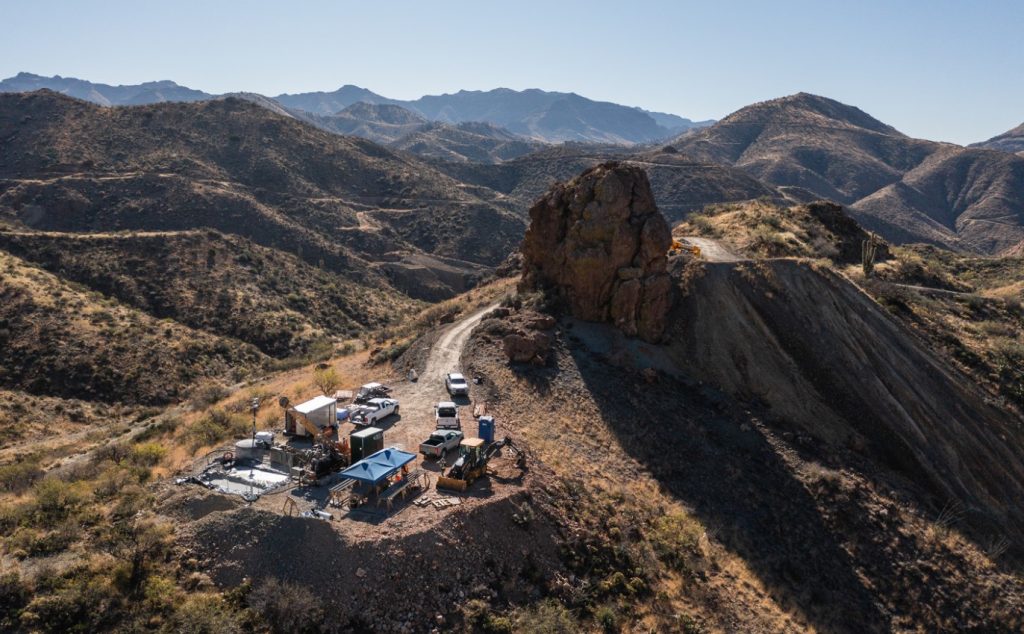Faraday Copper drills 0.4% copper over 117 metres at Copper Creek, Arizona

Faraday Copper Corp. [TSX-FDY; OTCQX-CPPKF] released the results of four drill holes from its phase 3 program at the Copper Creek project, located in Arizona, United States. One hole was drilled at Old Reliable to test resource expansion potential. Three holes were drilled at Area 51 as a follow-up to the recent Starship and Eclipse breccia discoveries.
Paul Harbidge, president and CEO, commented: “It is great to see our phase 3 drill program delivering on our objectives of adding mineral inventory near the existing resource and making new discoveries in the district. Specifically, drilling at Old Reliable has confirmed that the mineralization remains open at depth. At Area 51, drill hole FCD-24-048 at the Eclipse breccia adds to the previous successes by expanding the known mineralization and drill hole FCD-24-049 has identified elevated gold grades at the Starship breccia.”
Highlights: At Old Reliable, intersected 23.37 metres at 0.60% copper, 0.0242% molybdenum and 2.92 g/t silver from 276.81 metres in drill hole FCD-24-052. This intercept is within a longer intercept of 117 metres at 0.40% copper, 0.0285% molybdenum and 1.72 g/t silver from 222.46 metres.
This intercept at Old Reliable is outside the open pit mineral resource estimate (MRE) and confirms that the breccia-hosted mineralization is open at depth.
At Area 51, intersected 43.24 metres at 0.35% copper and 0.83 g/t silver from 65.23 metres in drill hole FCD-24-048 at the recently discovered Eclipse breccia. This hole expands the known mineralization of the breccia:
Demonstrated the potential for elevated gold grades at the Starship breccia with 0.22 g/t gold, 1.86 g/t silver and 0.12% copper over 18.52 metres from 113.24 metres in drill hole FCD-24-049. This intercept contains the highest gold:copper ratio on the project to date.
Old Reliable was the site of small-scale underground mining for copper and molybdenum prior to World War II. Starting in the 1970s, an experimental in-situ leach operation recovered some of the near-surface copper oxide mineralization. The sulphide-hosted mineralization remains in place. During the 1990s, densely spaced vertical drilling led to resource definition to approximately 200 metres below surface. Several of those drill holes end in mineralization and the resource is open at depth and laterally. Follow up drilling is planned for this area.
Drill hole FCD-24-052 was collared north of Old Reliable and drilled to the south. The hole was designed to test the depth extension of the mineralization and is entirely outside the open pit used to constrain the MRE.
Area 51 was identified as highly prospective by integrating airborne versatile time domain electromagnetic (VTEM) geophysical data and short wave infrared spectral data together with geological mapping and sampling. Area 51 encompasses a porphyry intrusion with nine mapped breccia bodies over an area of approximately 400 m by 400 m, including Starship and Eclipse. Follow up drilling is currently in progress.
Drill hole FCD-24-048 was collared immediately east-southeast of the Eclipse breccia and drilled to the west-northwest. The mineralization consists of chalcopyrite and chalcocite. The highest grades are associated with chalcopyrite-pyrite and subordinate chalcocite cement in hydrothermal breccia.
Drill hole FCD-24-049 was collared close to the surface outcrop of the Starship breccia and drilled steeply the Northwest. The mineralization occurs as chalcocite with subordinate chalcopyrite cement within a hydrothermal breccia, which also includes pyrite and quartz. This hole intersected 18.52 m at 0.22 g/t gold and 0.12% copper from 113.24 m. This intercept has the highest gold:copper ratio on the project to date.
Drill hole FCD-24-047 was collared southeast of the Starship breccia and drilled steeply to the northwest to test the depth extent of the Starship breccia. The hole intersected Glory Hole volcanics from surface to 282 m which are intruded by granodiorite from 82 m to 129 m.
Next Steps: Phase III drilling continues and is focussed on three objectives: reconnaissance drilling on new targets; expanding the MRE; and better delineating high-grade mineralized zones.
As part of the Phase III program, 21 drill holes have been completed and results for fourteen have been released. Eight holes were drilled in Area 51, three in the Copper Prince-Copper Giant area, three in the Bald-American Eagle area and three near Old Reliable. Additional holes are currently being designed to further test Area 51 and other high priority target areas.
